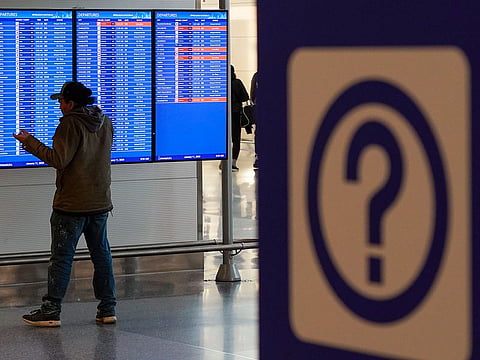Iran-Israel conflict: Cancellations of flights to Dubai spike from non-regional hubs
Arrivals see cancellations from routes outside closed airspaces: Tracker data

Dubai: New data from Flightradar24 and FlightAware indicate a notable uptick in cancellations of flights to Dubai International Airport (DXB) on certain routes outside the conflict zone in the Middle East.
The increase in cancellations follows the airspace disruption triggered by the Iran–Israel crisis beginning June 13, causing ripple effects across broader flight schedules worldwide.
What is a likely explanation? The mid-air bottlenecks are forcing airlines to either take much longer detours—adding hours to flight times—or cancel flights entirely to avoid the domino effect on aircraft rotations and crew schedules.
Arrivals hit non‑conflict routes
Recent flight tracking data highlights steep cancellation increases on inbound routes to Dubai from countries beyond the conflict zone.
Cancellation rates on inbound services from Pakistan and India, for instance, have risen sharply, with flights from Karachi, Lahore, and Multan scrubbed around June 7. These cancellations reflect a fourfold jump—from an estimated 5% pre-crisis rate to about 20% now.
Flights from Europe, while less severely affected, also show signs of strain. Routes from hubs such as Istanbul now face 5–10% cancellation rates, up from a usual 1–3%—according to trends noted by Flightradar24. Though these contitute a minority of overall flights, the disruptions suggest a broadening impact to wider air traffic networks.
Non-regional knock-on effect?
While the airspace closures are concentrated over Iran, Iraq, Jordan, and Israel, they are causing knock-on effects across global flight routes.
Since June 13, several airlines have suspended or rerouted flights that would normally pass through these critical corridors, especially over Iranian and Iraqi airspace, which serve as primary pathways for westbound and eastbound traffic between Asia, Europe, and the Gulf.
Aircraft originally bound for regional routes through closed skies are now delayed or pulled from service, which reduces overall fleet flexibility. This has led to a rise in non-regional cancellations of flights to Dubai from cities not in the conflict zone.
With high summer travel volumes and limited rerouting capacity, airlines are prioritising long-haul or high-demand routes, leaving secondary services—like those from parts of Pakistan, India, and some parts of Europe—vulnerable to cancellation.
So UAE-bound travellers from these regions should closely track flights, and be flexible in their travel plans.
Sign up for the Daily Briefing
Get the latest news and updates straight to your inbox




